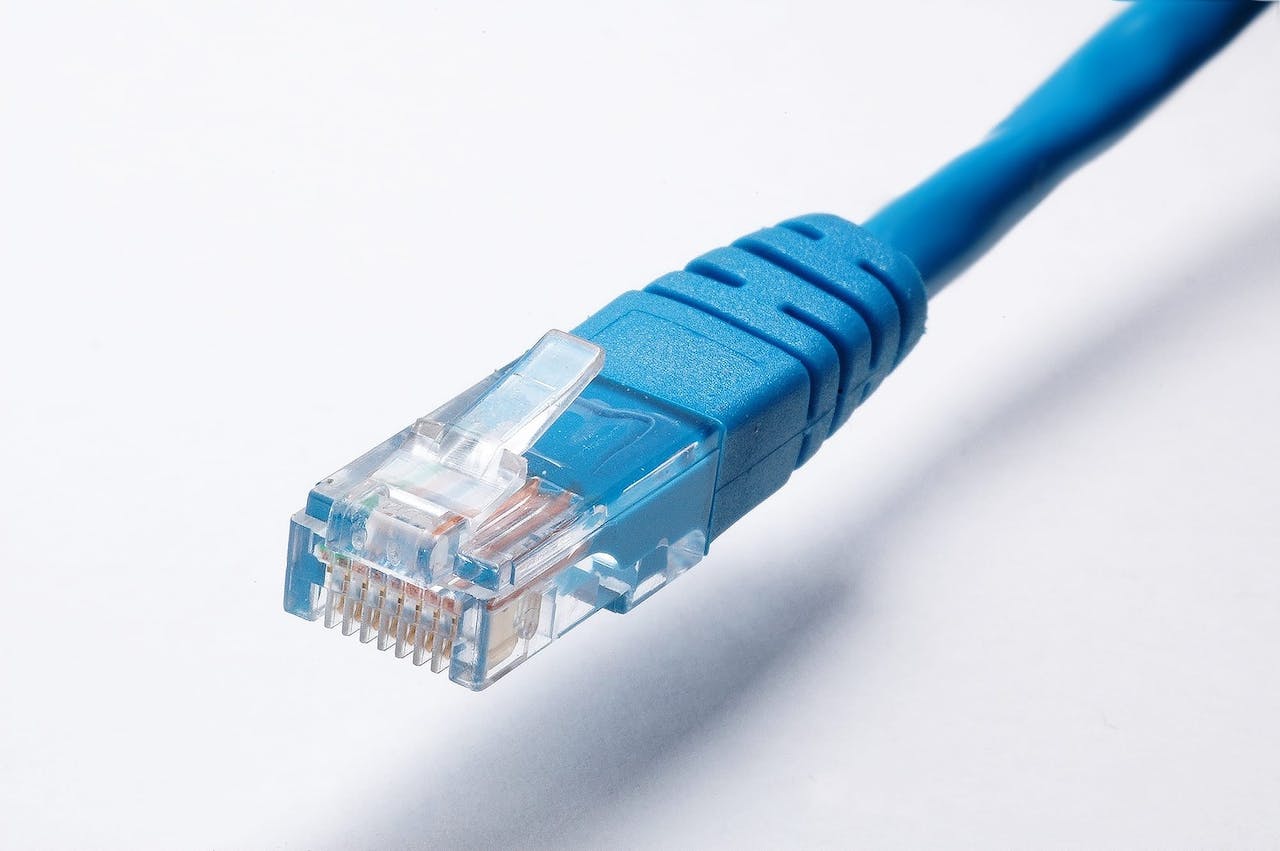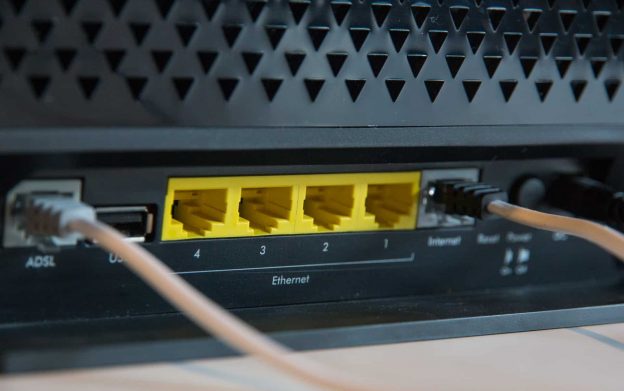In today’s digital age, having a stable and fast network connection is essential for various online activities, from work to entertainment. Ethernet cables provide a reliable solution for achieving this, offering consistent speeds and minimal latency. In this article, we’ll explore the three best methods for connecting Ethernet cables and ensuring a stable and speedy network connection.
#1: Connecting to the Router
The first step in connecting via Ethernet is to acquire an Ethernet cable, also known as RJ-45, CAT5, or CAT6 cable, which has a square plug with a clip on each end. Ensure that you have the right cable for the job. While regular Ethernet cables suffice for indoor use, consider using Polyethylene outdoor Ethernet cables if you need them to withstand extreme temperatures and weather variations.
Before proceeding, make sure your router is online by checking the constant light on its front. Your router should be connected to your modem, which, in turn, should be linked to a Cable or Ethernet port in your wall. If you only have a modem, ensure it’s connected to the appropriate port. Locate the Ethernet ports on your computer and router; they are square and typically have an icon depicting a series of connected boxes near them.
On your router, these ports are usually labeled “LAN” (Local Area Network), while the port you need on a modem might say “Internet” or “WAN.” Finally, plug one end of the Ethernet cable into your computer and the other into your router. If your router is online, this connection will provide your computer with Internet access almost immediately.
Related Link: How to Login to Your Router and Change Wi-Fi Settings
# 2: Configuring Ethernet Settings on Windows
Configuring Ethernet settings on Windows is straightforward. Begin by opening the Start menu, clicking on “Settings,” and selecting “Network & Internet.” In the “Ethernet” section, ensure your Ethernet connection is working by verifying that your Internet’s network name appears at the top with “Connected” below it. If your Ethernet isn’t working, try a different port on the router or a different Ethernet cable.
# 3: Configuring Ethernet Settings on Mac
Configuring Ethernet settings on a Mac involves opening the Apple Menu, selecting “System Preferences,” and clicking on “Network.” In the left-hand pane, choose the “Ethernet” connection and click “Advanced.” Navigate to the “TCP/IP” tab and ensure the “Configure IPv4” box says “Using DHCP.” If it doesn’t, select “Using DHCP.” Click “Renew DHCP Lease” to enable Internet access while connected via Ethernet. Click “OK” to save your settings, and your Ethernet connection should be live.
By following these three methods, you can easily connect Ethernet cables and optimize your network connection for a seamless online experience. Whether you’re working, streaming, or gaming, a stable and speedy Ethernet connection is the key to reliable connectivity.
Ready to improve your connection? Check out VMedia’s internet plans for faster and more reliable networking.

Troubleshooting Ethernet Connection Issues
Sometimes, despite following the steps for connecting Ethernet, you might encounter connectivity problems. In this section, we’ll cover common troubleshooting steps to address Ethernet connection issues effectively.
- Check Cable Connections: Make sure your computer, router, and modem are both properly plugged into the Ethernet cable’s two ends. A loose connection can lead to network disruptions.
- Restart Devices: Sometimes, a simple restart can resolve connectivity problems. Turn off your computer, router, and modem, wait a few seconds, and then turn them back on in sequence: modem first, router second, and computer last.
- Update Network Drivers: Outdated or corrupted network drivers can cause Ethernet issues. Visit the manufacturer’s website for your computer or network adapter to download and install the latest drivers.
- Firewall and Antivirus Software: Sometimes, security software can block network connections. Check your firewall and antivirus settings to ensure they are not hindering your Ethernet connection.
- IP Configuration: Incorrect IP settings can disrupt your Ethernet connection. In Windows, open the Command Prompt and type “ipconfig /release” followed by “ipconfig /renew” to reset your IP configuration. On Mac, ensure that your network settings are set to “Using DHCP.”
Related Link: How to Choose the Right Internet Plan
Extending Ethernet Connections for Large Spaces
In situations where you need to extend your Ethernet connection to cover a larger area, you can utilize additional hardware. This section will explore methods for extending Ethernet connections, whether you’re working in a spacious office, setting up a home network, or enhancing your Wi-Fi coverage.
- Ethernet Switches: Ethernet switches allow you to expand your wired network by providing additional Ethernet ports. Simply connect one end of an Ethernet cable to your router or existing Ethernet connection and the other end to the switch. Then, connect your devices to the switch using Ethernet cables.
- Powerline Adapters: Powerline adapters utilize your electrical wiring to transmit Ethernet signals throughout your home or office. Plug one adapter into a power outlet near your router and connect it to the router via Ethernet. Place another adapter in the area where you need Ethernet connectivity and connect your device to it using another Ethernet cable. This method is especially useful when running long Ethernet cables is not practical.
- Access Points: Access points are devices that extend your network’s wireless coverage while providing Ethernet ports for wired connections. You can connect an access point to your router via Ethernet and position it in an area where Wi-Fi coverage is weak. This allows you to maintain a strong Wi-Fi signal and offer wired Ethernet connections simultaneously.
VMedia offers the Highest Quality Affordable Wifi in Canada
Enhance your home internet experience with VMedia Mesh Wi-Fi, offering unparalleled connectivity and security. This innovative solution blankets your entire home, regardless of size, with a strong, consistent wireless signal that smartly adjusts to your needs and usage. It’s not just about speed; it’s about seamless, reliable connectivity for every corner of your space.
Plus, with the advanced Wi-Fi 6 technology, you’re getting the fastest and most efficient wireless experience available today. And there’s more – VMedia Mesh Wi-Fi includes eero Secure, providing a robust security suite to protect your digital life from online threats. Setting it up is a breeze with the eero app, and VMedia’s support team is always ready to assist remotely.
Don’t let weak signals and security concerns hinder your online activities. Switch to VMedia Mesh Wi-Fi today and transform your home into a safe, high-speed connectivity hub.
Looking to enhance your internet setup? Explore VMedia’s internet options to ensure seamless connectivity.

Mastering Ethernet Connection: A Blueprint for Reliable Online Connectivity
Establishing a stable and fast Ethernet connection is crucial in today’s digital landscape, where online activities span work, entertainment, and communication. Through the three primary methods outlined in this article, connecting Ethernet cables becomes a straightforward task. Whether you’re using a Windows PC, a Mac, or directly connecting to your router, these methods ensure a reliable and speedy network connection.
Troubleshooting common Ethernet connection issues and extending your Ethernet reach to cover large spaces further enhances your networking capabilities. By following these steps and utilizing the appropriate hardware, you can enjoy the benefits of Ethernet connectivity, making your online experiences smoother and more dependable. Whether you’re working, streaming, gaming, or simply browsing, a stable Ethernet connection remains a fundamental tool for reliable online connectivity.
Related Link: What Is DSL Internet? Service and Connection Guide

